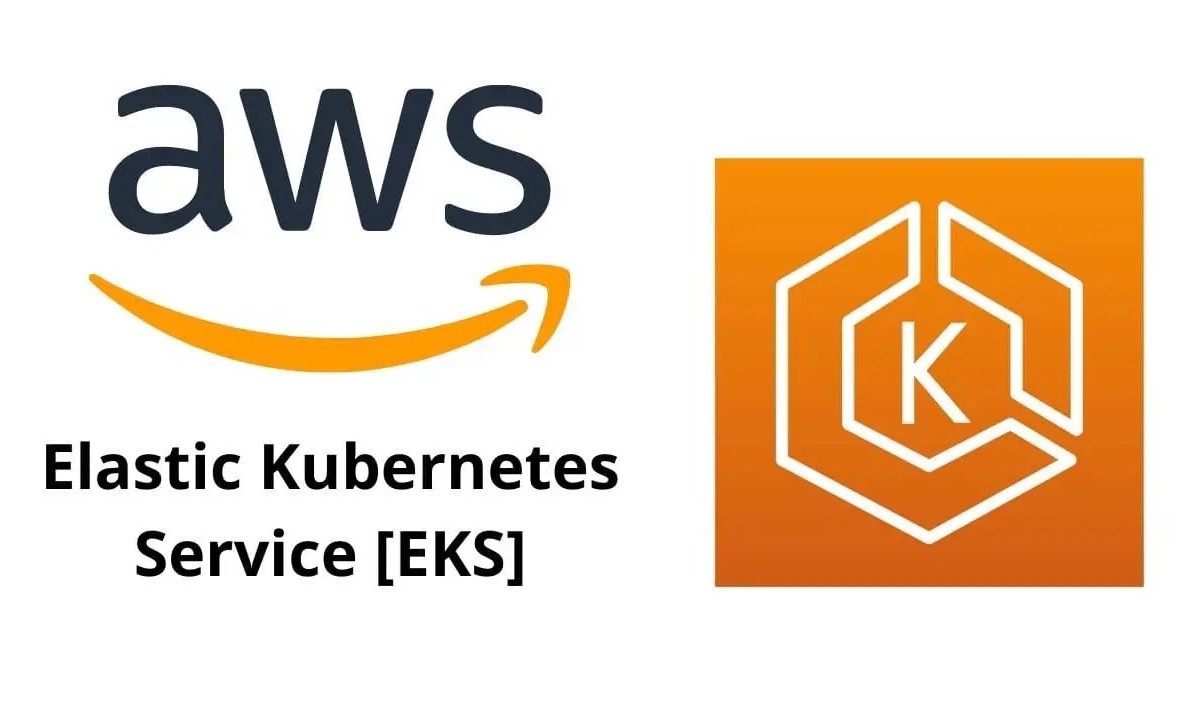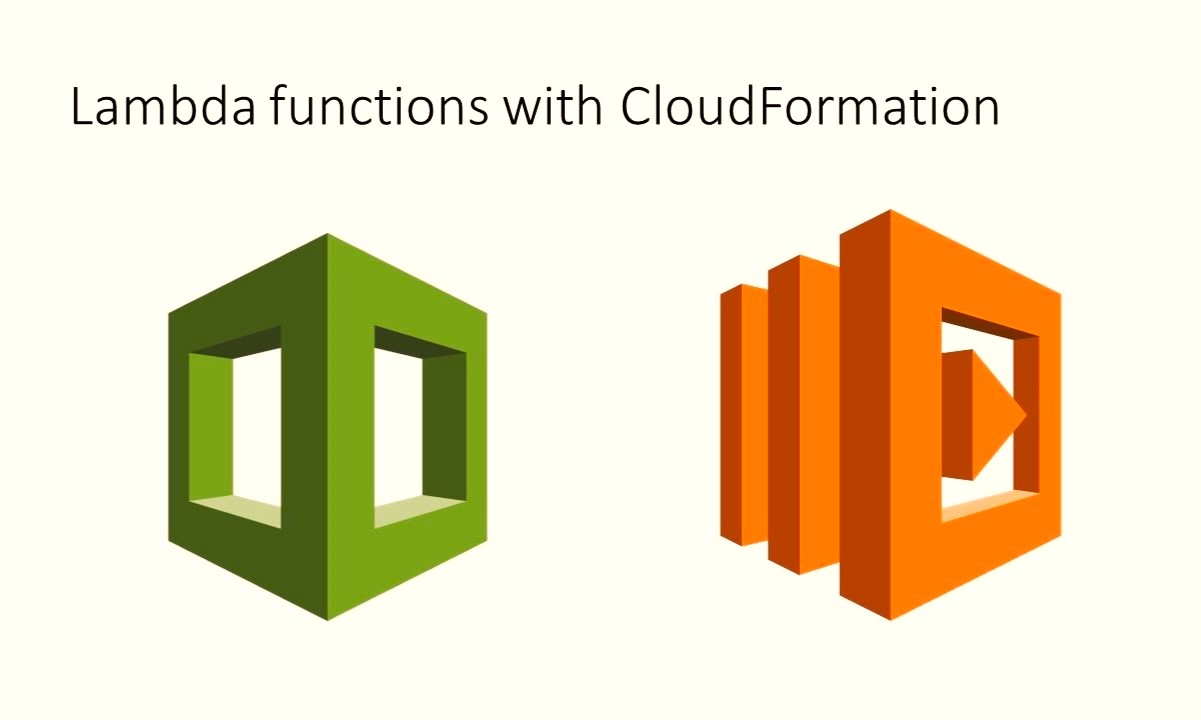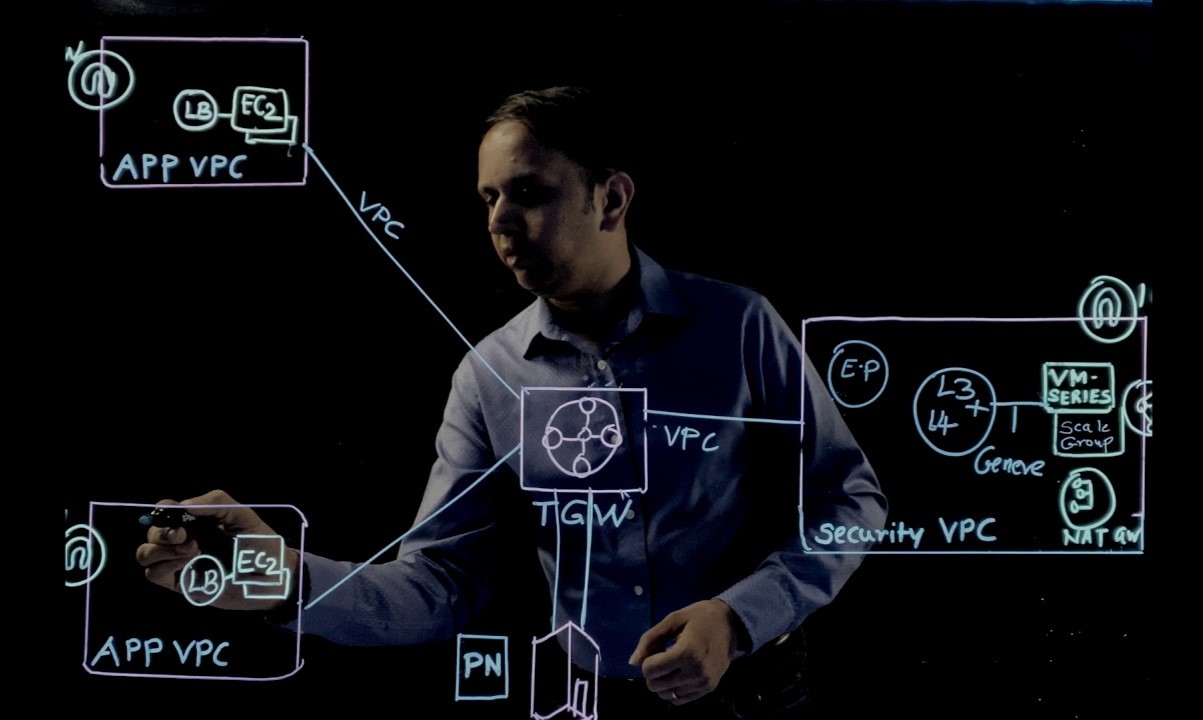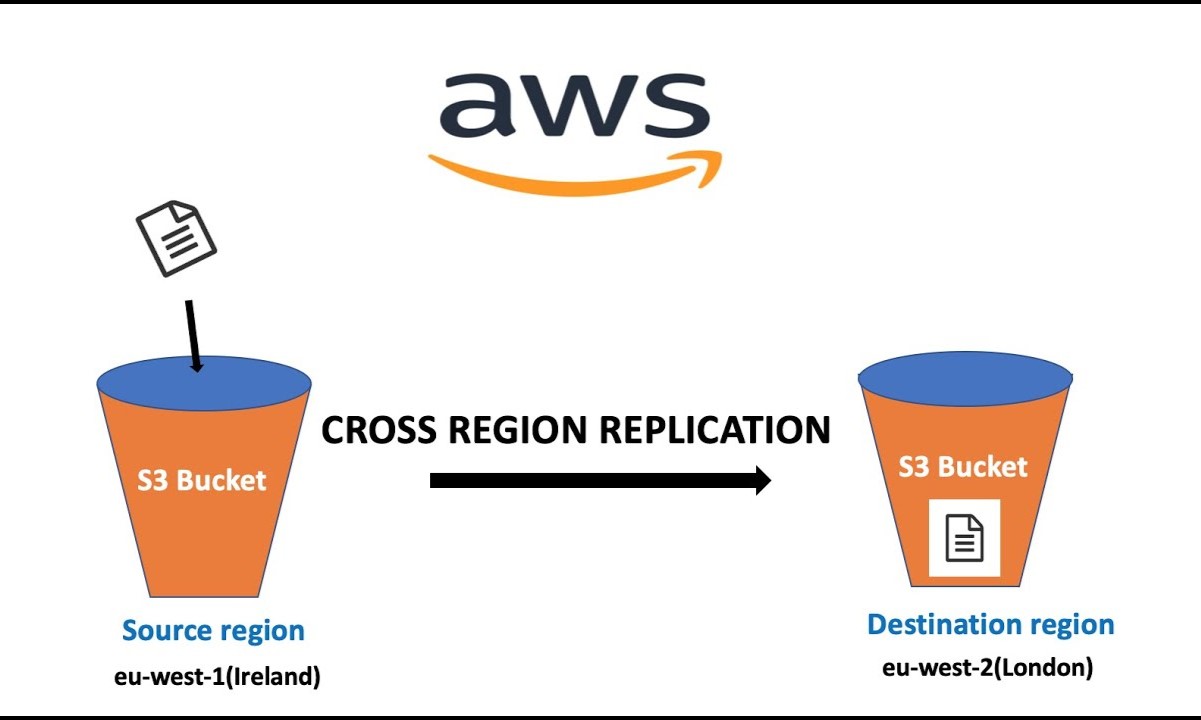Home>Technology and Computers>Integrating EKS With Other AWS Services


Technology and Computers
Integrating EKS With Other AWS Services
Published: January 23, 2024
Integrate EKS seamlessly with various AWS services to optimize your technology and computer infrastructure. Enhance performance and scalability with our expert guidance.
(Many of the links in this article redirect to a specific reviewed product. Your purchase of these products through affiliate links helps to generate commission for Noodls.com, at no extra cost. Learn more)
Table of Contents
Introduction
In the ever-evolving landscape of cloud computing, Amazon Web Services (AWS) has emerged as a leading provider of scalable and flexible cloud infrastructure solutions. Among its array of services, Amazon Elastic Kubernetes Service (EKS) stands out as a powerful tool for managing and orchestrating containerized applications using Kubernetes.
EKS simplifies the process of deploying, managing, and scaling containerized applications using Kubernetes, an open-source platform renowned for its ability to automate the deployment, scaling, and management of application containers. By leveraging EKS, organizations can harness the power of Kubernetes without the complexity of managing the control plane and worker nodes.
As businesses increasingly embrace cloud-native technologies, the need to seamlessly integrate EKS with other AWS services becomes paramount. This integration not only enhances the capabilities of EKS but also enables organizations to leverage the full potential of AWS’s comprehensive suite of cloud services.
In this article, we will delve into the intricacies of integrating EKS with various AWS services, exploring how this integration can unlock new possibilities for deploying and managing containerized applications. From integrating EKS with EC2 instances to leveraging the power of serverless computing with AWS Lambda, we will uncover the seamless synergy between EKS and other AWS services.
By understanding the nuances of integrating EKS with different AWS services, organizations can optimize their cloud infrastructure, streamline operations, and unlock new avenues for innovation. Let’s embark on this journey to unravel the potential of integrating EKS with other AWS services, empowering businesses to thrive in the dynamic realm of cloud computing.
Read more: Integrating Bitbucket In AWS Codepipeline
Understanding EKS
Amazon Elastic Kubernetes Service (EKS) is a fully managed Kubernetes service offered by Amazon Web Services (AWS). It simplifies the process of deploying, managing, and scaling containerized applications using Kubernetes, an open-source platform known for its ability to automate the deployment, scaling, and management of application containers.
EKS eliminates the need for organizations to manage the complexities of Kubernetes clusters, including the control plane and worker nodes. Instead, AWS takes on the responsibility of provisioning, scaling, and maintaining the Kubernetes infrastructure, allowing businesses to focus on deploying and managing their applications.
One of the key advantages of EKS is its seamless integration with other AWS services, enabling organizations to leverage a comprehensive suite of cloud services to enhance their containerized applications. EKS provides native integrations with various AWS offerings, allowing businesses to harness the full potential of AWS while benefiting from the agility and scalability of Kubernetes.
By leveraging EKS, organizations can achieve high availability and scalability for their containerized applications, ensuring that they can seamlessly adapt to changing workloads and demands. EKS also facilitates the deployment of microservices-based architectures, empowering businesses to build and manage complex, distributed applications with ease.
Furthermore, EKS offers robust security features, including integration with AWS Identity and Access Management (IAM) for fine-grained access control and the ability to leverage AWS security features such as VPC isolation and encryption at rest. This ensures that containerized applications running on EKS are well-protected and compliant with industry standards and regulations.
In essence, EKS serves as a powerful enabler for organizations looking to embrace cloud-native technologies and modernize their application infrastructure. By providing a managed Kubernetes service with seamless integrations with other AWS services, EKS empowers businesses to focus on innovation and growth while AWS handles the heavy lifting of managing the Kubernetes infrastructure.
As we continue our exploration of integrating EKS with other AWS services, it is crucial to grasp the foundational aspects of EKS and its role in revolutionizing the deployment and management of containerized applications. With this understanding in place, we can delve into the intricacies of integrating EKS with various AWS services, unlocking new possibilities for organizations seeking to thrive in the dynamic realm of cloud computing.
Integrating EKS with EC2
Integrating Amazon Elastic Kubernetes Service (EKS) with Amazon Elastic Compute Cloud (EC2) presents a compelling synergy that combines the power of container orchestration with the flexibility of virtual computing resources. By seamlessly integrating EKS with EC2, organizations can harness the scalability and reliability of Kubernetes for containerized applications while leveraging the versatile compute capabilities of EC2 instances.
One of the key aspects of integrating EKS with EC2 is the ability to leverage EC2 instances as worker nodes within the Kubernetes cluster managed by EKS. This integration allows organizations to deploy and run containerized workloads on EC2 instances, benefiting from the extensive instance types and configurations offered by EC2. EKS simplifies the process of provisioning and managing these EC2 instances as part of the Kubernetes cluster, ensuring seamless integration and efficient utilization of compute resources.
Furthermore, integrating EKS with EC2 enables organizations to take advantage of EC2 Spot Instances for cost-effective compute capacity. EKS provides native support for EC2 Spot Instances, allowing organizations to run interruption-tolerant workloads at a significantly lower cost compared to On-Demand instances. This integration empowers businesses to optimize their infrastructure costs while maintaining high availability and performance for containerized applications.
Moreover, the integration of EKS with EC2 facilitates the utilization of EC2 Auto Scaling groups within the Kubernetes cluster. This enables automatic scaling of EC2 instances based on the resource demands of containerized workloads, ensuring that the cluster can dynamically adapt to changing workload requirements. EKS seamlessly manages the integration with EC2 Auto Scaling, allowing organizations to achieve optimal resource utilization and scalability for their containerized applications.
In addition, integrating EKS with EC2 opens up possibilities for leveraging EC2 features such as Elastic Block Store (EBS) volumes and Elastic Network Interfaces (ENIs) within the Kubernetes environment. This integration enables organizations to utilize persistent storage and networking capabilities offered by EC2, enhancing the resilience and performance of containerized applications running on EKS.
In essence, the integration of EKS with EC2 empowers organizations to harness the combined capabilities of Kubernetes and EC2, creating a robust foundation for deploying and managing containerized applications at scale. By seamlessly integrating EKS with EC2, organizations can optimize their infrastructure, achieve cost-efficiency, and unlock new possibilities for innovation in the realm of cloud-native technologies.
Integrating EKS with S3
Integrating Amazon Elastic Kubernetes Service (EKS) with Amazon Simple Storage Service (S3) introduces a seamless synergy between containerized applications and scalable object storage. By integrating EKS with S3, organizations can leverage the robust storage capabilities of S3 within the Kubernetes environment, unlocking new possibilities for managing and accessing data in containerized applications.
One of the key aspects of integrating EKS with S3 is the ability to utilize S3 as a persistent and scalable storage solution for containerized workloads running on EKS. This integration enables organizations to store and access data directly from S3 within their Kubernetes applications, eliminating the need to manage complex storage infrastructure within the cluster. By leveraging S3, organizations can achieve high durability, availability, and scalability for their data storage needs, ensuring that containerized applications can seamlessly access and manipulate data stored in S3.
Furthermore, integrating EKS with S3 empowers organizations to take advantage of S3’s rich feature set, including versioning, encryption, and lifecycle management. This integration enables containerized applications running on EKS to benefit from S3’s advanced capabilities, ensuring data integrity, security, and compliance with organizational and regulatory requirements. Additionally, organizations can leverage S3’s cost-effective storage tiers, such as S3 Standard-Infrequent Access and S3 Glacier, to optimize storage costs for their containerized applications.
Moreover, the integration of EKS with S3 facilitates seamless data transfer and synchronization between containerized applications and S3. This enables organizations to efficiently ingest and process data from S3 within their Kubernetes workloads, empowering them to build data-driven applications with ease. Additionally, the integration with S3 opens up possibilities for leveraging S3 event notifications and triggers to orchestrate workflows and processes within the Kubernetes environment, enhancing the automation and scalability of containerized applications.
In essence, integrating EKS with S3 creates a powerful symbiosis between containerized applications and scalable object storage, enabling organizations to build resilient, data-centric applications within the Kubernetes environment. By seamlessly integrating EKS with S3, organizations can optimize data management, enhance application capabilities, and unlock new avenues for innovation in the realm of cloud-native technologies.
Integrating EKS with RDS
Integrating Amazon Elastic Kubernetes Service (EKS) with Amazon Relational Database Service (RDS) presents a compelling synergy that combines the power of containerized applications with the robustness of managed relational databases. By seamlessly integrating EKS with RDS, organizations can leverage the scalability and reliability of Kubernetes for containerized applications while benefiting from the managed database services offered by RDS.
One of the key aspects of integrating EKS with RDS is the ability to seamlessly connect containerized applications running on EKS with RDS database instances. This integration enables organizations to leverage RDS as a fully managed relational database service for their Kubernetes workloads, eliminating the complexities of database administration and maintenance. By leveraging RDS, organizations can deploy and manage popular relational database engines such as MySQL, PostgreSQL, and Amazon Aurora, ensuring that their containerized applications have access to scalable and performant database solutions.
Furthermore, integrating EKS with RDS empowers organizations to take advantage of RDS’s advanced features, including automated backups, high availability, and security enhancements. This integration ensures that containerized applications running on EKS can benefit from the resilience and data protection mechanisms offered by RDS, allowing organizations to focus on building and scaling their applications without the burden of managing database infrastructure.
Moreover, the integration of EKS with RDS facilitates seamless connectivity and data exchange between containerized applications and RDS database instances. This enables organizations to build microservices-based architectures within the Kubernetes environment, where individual services can interact with RDS databases to store and retrieve data. Additionally, organizations can leverage RDS’s read replicas and Multi-AZ deployments to achieve high availability and fault tolerance for their database workloads running alongside containerized applications on EKS.
In essence, integrating EKS with RDS creates a robust foundation for building and managing containerized applications that rely on relational databases for data storage and retrieval. By seamlessly integrating EKS with RDS, organizations can optimize their application infrastructure, enhance data management capabilities, and unlock new possibilities for innovation in the realm of cloud-native technologies.
Integrating EKS with Lambda
Integrating Amazon Elastic Kubernetes Service (EKS) with AWS Lambda introduces a powerful synergy that combines the agility of serverless computing with the scalability of containerized applications. By seamlessly integrating EKS with Lambda, organizations can leverage the benefits of both platforms to build resilient and efficient cloud-native solutions.
One of the key aspects of integrating EKS with Lambda is the ability to orchestrate serverless functions within the Kubernetes environment. This integration enables organizations to seamlessly deploy and manage Lambda functions as part of their containerized workloads running on EKS. By leveraging Lambda, organizations can execute code without provisioning or managing servers, allowing for rapid development and deployment of event-driven microservices within the Kubernetes cluster.
Furthermore, integrating EKS with Lambda empowers organizations to take advantage of Lambda’s event-driven architecture, where functions can be triggered by various AWS services, such as Amazon S3, Amazon DynamoDB, and Amazon API Gateway. This integration enables containerized applications running on EKS to seamlessly interact with Lambda functions, triggering serverless workflows and processes in response to events generated by other AWS services. Additionally, organizations can leverage Lambda’s support for custom runtimes to execute functions written in languages beyond the standard runtimes, expanding the capabilities of serverless computing within the Kubernetes environment.
Moreover, the integration of EKS with Lambda facilitates seamless communication and data exchange between containerized applications and serverless functions. This enables organizations to build event-driven architectures within the Kubernetes environment, where Lambda functions can process and respond to events generated by containerized workloads, creating a dynamic and responsive application ecosystem. Additionally, organizations can leverage Lambda’s built-in monitoring and logging capabilities to gain insights into the execution of serverless functions within the Kubernetes cluster, enabling effective management and troubleshooting of event-driven workflows.
In essence, integrating EKS with Lambda creates a harmonious blend of serverless computing and container orchestration, enabling organizations to build resilient, event-driven applications within the Kubernetes environment. By seamlessly integrating EKS with Lambda, organizations can optimize their application infrastructure, enhance event-driven capabilities, and unlock new possibilities for innovation in the realm of cloud-native technologies.
Conclusion
In conclusion, the seamless integration of Amazon Elastic Kubernetes Service (EKS) with various Amazon Web Services (AWS) offerings opens up a world of possibilities for organizations seeking to harness the power of cloud-native technologies. By understanding the intricacies of integrating EKS with services such as EC2, S3, RDS, and Lambda, businesses can optimize their infrastructure, streamline operations, and unlock new avenues for innovation.
The integration of EKS with EC2 empowers organizations to combine the scalability and reliability of Kubernetes with the versatile compute capabilities of EC2 instances. This synergy enables efficient utilization of compute resources, cost-effective capacity with EC2 Spot Instances, and dynamic scaling with EC2 Auto Scaling groups, creating a robust foundation for deploying and managing containerized applications at scale.
Furthermore, integrating EKS with S3 introduces a seamless synergy between containerized applications and scalable object storage. Organizations can leverage S3 as a persistent and scalable storage solution within the Kubernetes environment, benefiting from advanced features such as versioning, encryption, and cost-effective storage tiers. This integration enhances data management capabilities and empowers organizations to build resilient, data-centric applications within the Kubernetes environment.
The integration of EKS with RDS presents a compelling synergy that combines the power of containerized applications with the robustness of managed relational databases. By seamlessly connecting containerized applications with RDS database instances, organizations can leverage scalable and performant database solutions, automated backups, and high availability, creating a solid foundation for building and managing data-driven applications within the Kubernetes environment.
Moreover, integrating EKS with Lambda introduces a powerful synergy that combines the agility of serverless computing with the scalability of containerized applications. This integration enables organizations to orchestrate serverless functions within the Kubernetes environment, build event-driven architectures, and seamlessly interact with Lambda functions, unlocking new possibilities for building resilient and efficient cloud-native solutions.
In essence, the integration of EKS with various AWS services empowers organizations to optimize their application infrastructure, enhance data management capabilities, and unlock new avenues for innovation in the realm of cloud-native technologies. By seamlessly integrating EKS with EC2, S3, RDS, and Lambda, businesses can thrive in the dynamic landscape of cloud computing, leveraging the full potential of AWS while embracing the agility and scalability of Kubernetes.














